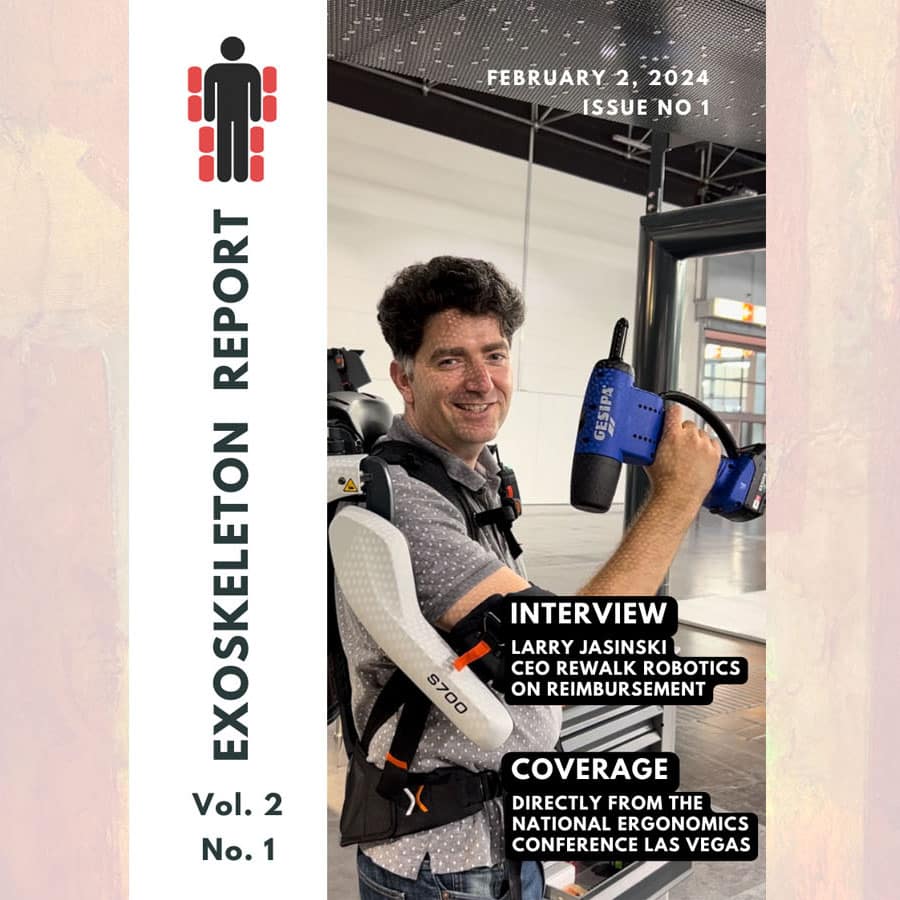A new study on “Metabolically efficient walking assistance using optimized timed forces at the waist” explores variations in the optimal timing of force application while walking on a treadmill with the goal of reducing the metabolic cost of walking. The study results suggest that “bioinspired assistance,” or applying an assistive force during the phase of walking, is not always optimal for optimizing human gait. The study creators were led by Dr. Phillippe Malcolm at the University of Nebraska Omaha. They discovered that assisting during the braking phase actually reduced the metabolic rate of healthy participants while walking by 48% and could also reduce metabolic cost in patients with impaired gait.
The full experimental setup is described in a separate paper (see references). Users were pulled along using a HumoTech simulator at precise times using a rope with an elastic element (to eliminate slack) and a specifically designed vest that improves force distribution. The study used an inverted pendulum model and a sinusoidal force profile. The research concludes that using this setup, the best time to apply an assistive force was with peak timing in the middle of the double support. “When we walk, there is a short period between steps where one foot is stopping its forward motion while the other is preparing to accelerate to take the next step forward. Our research shows that this brief window where both feet are on the ground is the best time to apply force to assist walking most efficiently,” Malcolm said.
The study results are contradictory to bioinspired assistive strategies. Copying nature directly (biomimicry) would suggest that applying an assistive force when the foot is trying to propel forward would result in the largest metabolic saving. Prokopios Antonellis, Ph.D., the first author of the study and now a postdoctoral fellow at Oregon Health & Science University, performed this research during his doctoral program at UNO. “Although bioinspired actuation can have certain benefits, our study demonstrates that this is not necessarily the best strategy for providing the greatest reduction in metabolic cost or energy expended,” Antonellis said. “This finding supports a greater emphasis on biomechanical testing rather than trying to predict optimal bioinspired strategies.”
Implications:
The study results could be equally applied to exoskeletons and rehabilitation robotics. There are multiple target demographics that could benefit from walking exercises but have difficulty performing them. One example is patients with hardening in their arteries who as a result experience leg pain and reduced mobility.
In a different study conducted by the University of Michigan, participants were allowed to choose their own timing and force magnitude for a powered ankle exoskeleton. In that study, the user’s preferred timing also did not match the biological one Letting Exoskeleton Users Choose Their Own Settings, Dynamic Walking 2020.
There is a level of complexity that can be challenging to articulate. From a precision motor control point of view alone, peak force timing is only one variable. There is a force curve (acceleration and deceleration of the actuator), in addition to the peak force time and magnitude. Another layer of complexity is that not all controls should be optimized to reduce the metabolic cost of movement. Some exoskeleton control strategies can focus on reducing compression forces in the spine, contraction forces on specific muscle groups, or can be optimized for comfort and seamlessness. Regardless of the level of complexity, it is astonishing to see how research has shifted from “can exoskeletons reduce the metabolic cost of walking?” to “how to optimize the force application for best results” in the span of just a few years.
References:
- UNO Research Discovers Surprising Way to Make Walking Easier, University of Nebraska Omaha, Brandon Bartling, March 16, 2022, link
- P. Antonellis, A.M. Gonabadi, S. A. Myers, I. I. Pipinos, P. Malcolm. Metabolically efficient walking assistance using optimized timed forces at the waist. Science Robotics, 2022, Vol 7, Issue 64. DOI: 10.1126/scirobotics.abh1925
- Gonabadi, A. M., Antonellis, P., & Malcolm, P. (2020). A system for simple robotic walking assistance with linear impulses at the center of mass. IEEE Transactions on Neural Systems and Rehabilitation Engineering, 28(6), 1353-1362. DOI: 10.1109/TNSRE.2020.2988619




Where can I order this?
Hello Rafael, the above is an experimental setup. The HumoTech simulator can be ordered through the developer’s website: https://humotech.com